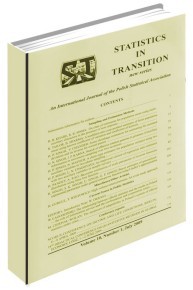An Empirical Analysis of the Effectiveness of Wishart and Mojena Criteria in Cluster Analysis
An Empirical Analysis of the Effectiveness of Wishart and Mojena Criteria in Cluster Analysis
Author(s): Artur Mikulec, Aleksandra Kupis-FijałkowskaSubject(s): Economy
Published by: Główny Urząd Statystyczny
Keywords: upper tail rule;moving average quality control rule;Mojena criteria;Wishart criterion (tree validation);Clustan Graphics
Summary/Abstract: Mojena and Wishart criteria are methods of selecting the optimal grouping result of agglomerative cluster analysis methods (hierarchical). Two criteria were proposed by Mojena in the 70’s of the 20th century: the upper tail rule and moving average quality control rule, both based on an analysis of the fusion levels of objects in the dendrogram with the aim to determine the cut-off point of it, i.e. to choose the optimal clustering result. The third criterion: tree validation was created by Wishart and evaluates the randomness of the objects clustering in the dendrogram.The purpose of this paper is to present the results of the empirical analysis of the effectiveness of Mojena and Wishart criteria for the number of clusters selection, in comparison to other applicable criteria in this area, including those proposed by: Baker and Hubert, Calinski and Harabasz, Davies and Bouldin, Hubert and Levine. The empirical analysis has been carried out in ClustanGraphics 8 Program and selected packages in R environment for the generated data sets.
Journal: Statistics in Transition. New Series
- Issue Year: 13/2012
- Issue No: 3
- Page Range: 569-580
- Page Count: 12
- Language: English

